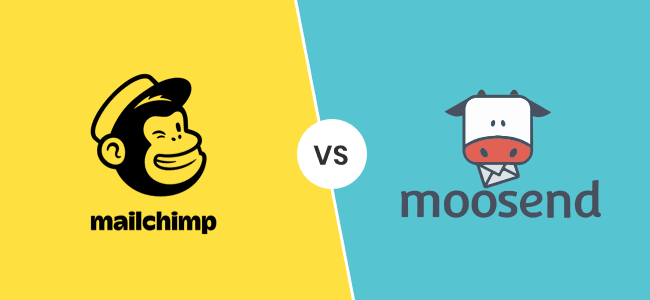Your Ultimate Email Typography Guide

Written By Jason Rowse - Digital Marketing Expert Updated: 09/05/2021 |
Do you know over 70% of email recipients delete emails that don’t load on their devices? On top of that, 15% of recipients will unsubscribe too.
Not only do enterprises need to focus on their uniqueness in the fonts they use today, but they also need to verify how these fonts appear across different devices and service providers before sending out emails.
Selecting the right typography can help businesses brand themselves aside from improving email engagement and conversion rates.
Read on to learn more about web fonts including how to choose a web font and the five most common ones you can try.
What Is A Web Font And What Are The Two Types?
While a desktop font is installed on your computer and you’re able to switch between font choices for different documents types, a web font is processed with the help of CSS @font-face rules to create custom font solutions. When it comes to email, your font needs to be compatible with the email service provider used by the majority of your subscribers.
Here are the two types of web fonts:
Web Safe Fonts (WSFs)
Fonts that are often pre-installed across client devices and browsers are called WSFs. It’s the safest solution because you can be sure your font will be displayed uniformly across all devices for every user. Examples of WSFs are Arial, Verdana, Times New Roman, Georgia, and Comic Sans.
Web Fonts (WFs)
On the other hand, WFs isn’t installed on most devices which can be a huge disadvantage. There is a high risk that the browsers or email service providers won’t be able to render the custom typeface in the emails correctly at all times. For example, Gmail doesn’t permit WFs which accounts for 28% of the market.
However, the major advantage of WFs is that you can match your branding themes, colors, and logos with WFs.
WFs are supported by:
- Apple Mail
- Android
- iOS Mail
- Outlook
- Thunderbird
Even if the email displays your font wrongly, you can always rely on a fallback web safe font such as Apple Mail that uses Helvetica or Gmail that uses Arial.
Why You Need To Stick To One Font
It’s a fact that the lack of a responsive design can lead to an 85% loss of leads as users unsubscribe from your emails.
Moreover, responsive design isn’t just about layouts and image carousels. Choosing your WF should be a significant part of the discussions you have around responsive design.
Picking readable and recognizable fonts will help your subscribers connect with your brand. It is a crucial component when it comes to sending marketing emails.
The legibility of the font is important for your email campaigns because most emails are opened on mobile devices. Hence, you need to test different fonts before deciding on a single one.
What To Ask Yourself When Choosing A Font?
WFs open-up opportunities for your design team to instill brand values into the email content.
Answer the following questions when deciding on the typography:
- Is the text legible?
- What is the objective of the email?
- What does the font represent/convey?
- Do you want to build awareness or do you want to convert users?
- Who is your target audience/clients? What are their distinct characteristics such as age, hobbies, motivations, and activities of the customer?
- What is the tone of voice (formal/informal) of your email content?
- How easy is the font for scrolling/navigating (what’s the user experience like)?
- Which device does the majority of your subscribers use to open the email?
- Does it reflect your brand values?
Most Common Fonts And Typefaces
Typefaces are all the typographical characters or symbols while fonts are the stylistic name for the character set of the typeface. As email users can take up to 86% more time to read fancy-fonts, it’s better to stick to the most common fonts.
Take a look at the five most common and reliable typeface groups you can use for your business emails to ensure correct display for different users.
Serif
This is a typeface that’s popular for emails due to its readability. Serif font is revered for its well-spaced words and left-inclined strokes. In fact, these fonts are often used by marketers to convey call-to-action statements. Popular serif fonts include Book Antiqua, Times New Roman, and Georgia.
Sans Serif
Written without the flourishing strokes of serif, Sans Serif is semi-formal and used in many marketing emails i.e. by Facebook for instance. The popular sans serif fonts are Arial, Verdana, Helvetica, and Open Sans.
Modern Serif
Didone is a modern serif font which refers to fonts with pronounced strokes of contrasting thick and thin lines. Heavy vertical lines and thin serifs make it one of the fonts to try out if you’re experimenting with different fonts. The origin of this typeface goes back to the 18th century and is known to be one of the finest. Bodoni is another example of a modern serif font.
Script
Is your brand fashionable and edgy? The Script font brings handwriting-like fonts that are informal, yet unique. It’s one that can stimulate happiness in the reader and is a typeface typically used by email marketers in the beauty industry.
Display
During the initial decades of printing, the display fonts were inexistent. It’s best for large headings and subtitles than for the body of email text because this font includes variations of artistic strokes with flourishing letters and characters. Examples of display typeface are distressed, ultra-light, bold, shadowed, or engraved.
Bottom Line
When it comes to typefaces, people often confuse it with the stylistic subset called fonts. However, both are crucial to email marketing content. They help you express your brand values while also increasing the readability of the content.
Try testing your next emails out with commonly-used fonts like serif, sans serif, or script.




